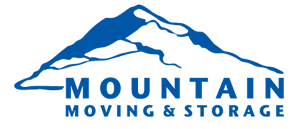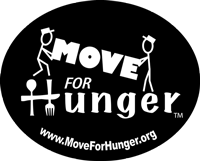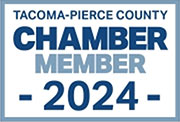10 Tacoma, WA Local Moving Tips
Planning a move across Tacoma? Whether you’re relocating to the historic North End, the vibrant Proctor District, or the peaceful outskirts near Point Defiance, moving locally still requires careful planning and preparation.
While the distance may be shorter, the logistics are just as important. This guide will walk you through 10 useful moving tips meant to simplify your transition.
Table of Contents
- Selecting a Tacoma-Based Moving Company
- Ensuring A Cost-Efficient Local Move in Tacoma
- Moving Checklist for an Organized Tacoma Relocation
- Ways to Declutter and Downsize Before Your Tacoma Move
- Packing Strategies for Tacoma Homeowners
- Handling Bulky and Delicate Items
- Secure and Flexible Storage Solutions in Tacoma
- Handling Utilities When Moving Locally in Tacoma
- Tacoma-Specific Moving Regulations and Permits
- Settling into Your New Tacoma Neighborhood
With these tips, checklists, and expert insights, you’ll feel more in control of your move—and ready to settle into your new neighborhood with confidence.
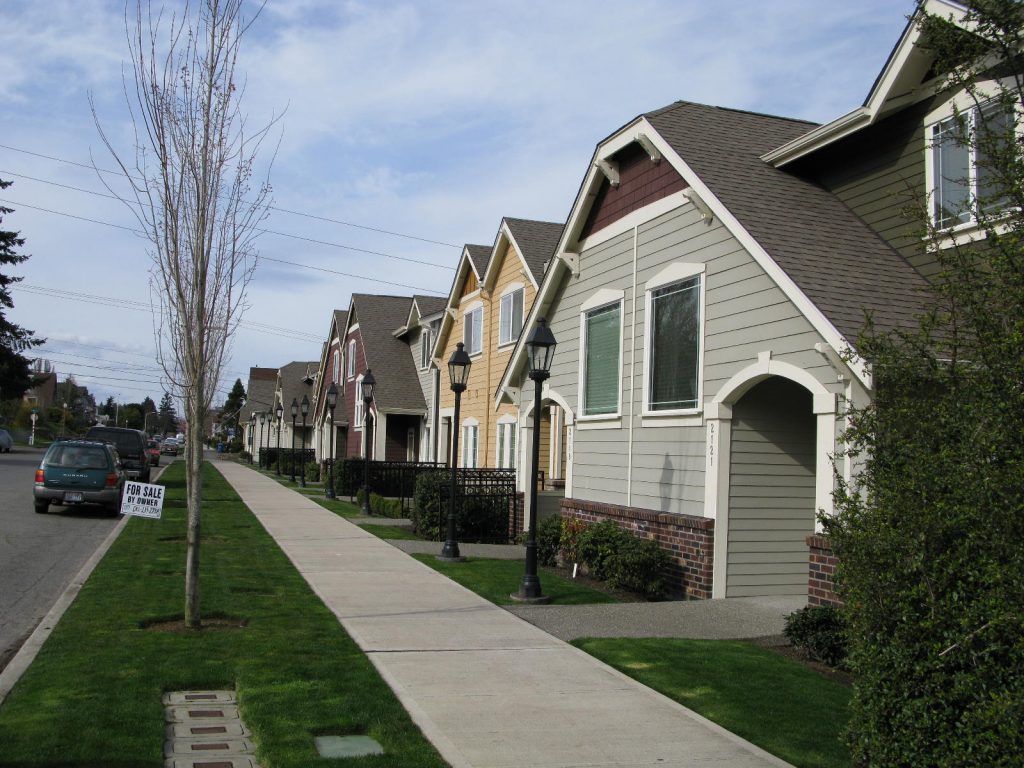
1. Selecting a Tacoma-Based Moving Company
What to Look for in a Reliable Moving Company
Choosing the right movers can make or break your Tacoma move. A dependable business should offer:
- Clear communication
- Transparent pricing
- Track record of punctuality
Look for movers who provide in-person or virtual assessments before giving a quote—it shows they care about accuracy and planning. Also, make sure their employees are trained in proper handling techniques to protect both your belongings and their safety. These are all things professional Tacoma moving companies have no problem answering upfront.
Researching and Comparing Local Moving Companies
Tacoma offers a range of local moving companies, but not all provide the same level of service. Start by gathering a list of three to five businesses operating in the area.
It’s best to compare each company’s:
- Pricing structures
- Services
- Availability
Some movers specialize in residential moves, others focus on handling commercial spaces—know what you need and verify that your choice aligns.
Pay special attention to package options. “Moving companies can offer a variety of services to assist you in your transition. It’s essential to know what these are, so you can choose the ones that best suit your needs,” Forbes Contributors Barbara Zito and Kristi Waterworth explain.
Some of these services include:
- Loading and unloading
- Packing and unpacking
- Furniture disassembly and reassembly
- Storage options
- Specialty item handling
Checking for Licenses, Insurance, and Customer Reviews
Before signing any contracts, validate the company’s licensing and insurance status. Reliable moving companies should have:
- Washington Utilities and Transportation Commission (UTC): In Washington State, local moving companies are required to operate with a UTC license. This ensures the movers are regulated and compliant with safety and ethical standards.
- Mover’s Insurance: Reliable Tacoma movers operate with general liability and worker’s compensation insurance.
- Moving Valuation Plans for Customers: A licensed mover must offer optional coverage plans in the rare case a customer’s belongings are lost or damaged during the move.
- Released Value Protection: “Under this option, the mover is responsible for no more than 60 cents per pound per article,” notes the Federal Motor Carrier Safety Administration (FMCSA). Fortunately, this form of coverage comes at no additional cost.
- Full Value Protection: While this option is more comprehensive, ensuring your belongings are adequately compensated during the worst case scenario, it does cost extra.
What are past customers saying? Move.org suggests, “Find customer reviews on third-party sites like Yelp and Google Reviews instead of just reading the customer reviews that companies share on their websites.”
Additionally, look for patterns within reviews. Do multiple customers mention punctual crews, or do they report missing items and slow responses? Authentic feedback reveals what the company is really like when moving day arrives.
- Read recent reviews (from within the last 6 months) for up-to-date insights.
- Ask for references directly from the moving company—reputable businesses won’t hesitate to provide them.
- Google their name along with terms like “complaints” or “damage” to uncover hidden customer experiences.
The right Tacoma moving company will act like a true partner. They’ll treat your time, home, and belongings with professionalism while turning what could be chaos into a smooth, manageable process.
2. Ensuring A Cost-Efficient Local Move in Tacoma
Budgeting for Your Move
Start with a detailed moving budget. According to MoveBuddha, “The typical cost for hiring movers in Tacoma, WA is $133 per hour with a total move cost ranging from $490 to $4,399, on average.”
Remember to include a buffer of 10–15% for unplanned costs. Tacoma’s hilly topography may involve additional handling charges if access is difficult, so factor in tipping your movers into your budget.
How to Cut Costs Without Compromising on Quality
You don’t need to sacrifice reliability to save money. Choose a moving company that offers flexible packages so you can select only the services you truly need. Most movers allow you to handle packing while they focus solely on transportation, significantly reducing your overall bill.
Additionally, evaluate your movers based on these three main factors:
- Shop for Quotes: Get at least three quotes from Tacoma-based movers.
- Negotiating Estimates: Movers in Tacoma are often willing to match competitor prices if asked directly.
- How They Charge: Ask whether the company charges by the hour, per load, or has a minimum service time. A two-hour minimum is common in Tacoma, so plan your time accordingly to avoid overpaying.
Seasonal Discounts and Other Cost-Saving Opportunities
Timing matters. “The best time to move is between September and April, since moving companies aren’t in high demand during this time,” says MoveBuddha. Peak moving season in Tacoma, which is typically May through September, often comes at an elevated cost.
If you schedule your move mid-week or during the winter, you’ll likely access cheaper rates and available crews.
- Off-season deals: Many movers offer discounted rates from October through March.
- Referral bonuses: Some Tacoma companies will knock off a portion of your rate if you refer a new customer.
- Bundle services: If you’re moving and storing with the same company, ask for bundled pricing. It often costs less when services are combined.
3. Moving Checklist for an Organized Tacoma Relocation
Creating a Timeline
Moving across town can spiral into chaos without a solid plan. To ensure your Tacoma move is stress-free and efficient, an organized checklist is essential.
- 8 Weeks Out: Start researching Tacoma movers, gathering quotes, and checking online reviews. This is the time to secure your preferred moving date before popular slots fill up.
- 6 Weeks Out: Inventory every room. Decide what to keep, sell, donate, or toss. Begin collecting boxes and packing supplies if you plan to DIY.
- 5–4 Weeks Out: “Select a company and get written confirmation of your moving date, costs, and other details,” Leslie Corona from Real Simple suggests. Additionally, notify schools, employers, and subscription services of your change of address and begin boxing up non-essential items that you rarely use, such as seasonal décor or archive files.
- 3 Weeks Out: Continue packing room by room. Set aside important documents and valuables that you’ll transport personally. Arrange for warehouse storage in Tacoma if needed for overflow items.
- 2 Weeks Out: Schedule the transfer of utilities. Set a date to shut off or switch service providers for electricity, water, cable, and internet at both your current and future homes.
- 1 Week Out: Confirm all bookings and logistics with your moving company. Begin cleaning rooms as you finish packing them. Disassemble furniture and prepare items for transit.
- 2 Days Out: Pack a moving day bag–medication, chargers, basic toiletries, paperwork, snacks, and any must-haves. Defrost the freezer and clean the appliances you’re taking with you.
- Moving Day: Walk through the house to ensure nothing’s left behind. Hand over your keys if required. Provide movers with clear instructions. Check off each item as it’s loaded.
Don’t Skip These Last-Minute Preparations
Last-minute details can impact your entire moving experience.
It might be helpful to ask yourself:
- Did you label every box clearly by room and contents?
- Did you set aside cleaning supplies for a final sweep after the truck leaves?
- Did you finish your inventory list?
It’s also important not to overlook these last-minute action steps when moving within Tacoma:
- Keep a roll of toilet paper and hand soap at both locations.
- Charge devices and pack power strips together.
- Document furniture condition with quick photos in case of damage.
- Do a final sweep: closets, cabinets, attic, and sheds.
Track Every Item for Peace of Mind
Assign a number to every box and create a master list using a simple spreadsheet or moving app. This inventory clarifies what each item is, where it’s located, and whether it has made it to your new Tacoma home. In the rush of moving day, knowing exactly what you’ve packed—and where it is—keeps your experience on track.
4. Ways to Declutter and Downsize Before Your Tacoma Move
Your Move Starts with Less Stuff
Before the first moving box is taped shut, there’s one major step that sets the tone for a smooth relocation: decluttering. “Decluttering can save you the time you’d otherwise spend acquiring, organizing, cleaning, and maintaining your stuff,” Moving.com states. Reducing the volume of your belongings lightens your load physically, mentally, and financially, as less stuff means fewer moving expenses.
Simple Ways to Declutter Your Space
Start with one room at a time to avoid being overwhelmed. Use the Four-Box Method to help sort everything efficiently:
- Keep: For items you use regularly, love, or truly need to keep.
- Donate: For gently used possessions that no longer serve you but could benefit someone else (i.e., clothes, books, or home goods others might appreciate)
- Sell: For items of value that you’re ready to part with (i.e., electronics, collectibles, or name-brand goods in good condition)
- Trash: For broken, unusable, or worn-out items that cannot be donated, sold, or reused.
Additionally, focus first on high-traffic areas like the kitchen or living room, where clutter tends to hide in plain sight.
Tactical Techniques for Downsizing
When it comes to downsizing, consider following these tactics to help simplify your move:
- Digitize your paper clutter. Convert documents, photos, and manuals into digital files to free up drawer space.
- Measure your new space. Use floor plans to gauge what furniture actually fits. Oversized pieces? Let them go.
- Adopt a minimalist mindset. Keep inventory that serves a purpose or brings joy.
Overall, decluttering and downsizing help with more than easing your transition. The process of downsizing and decluttering helps free up mental space, lowers moving costs, and allows you to settle into your new Tacoma home more quickly.
5. Packing Strategies for Tacoma Homeowners
Effective Packing Techniques to Protect Your Belongings
Packing isn’t just about fitting things in boxes — it’s about doing it in a way that ensures your belongings arrive in one piece. While packing up your belongings, use quality materials such as:
- Sturdy boxes
- Heavy-duty packing tape
- Bubble wrap
- Packing paper
- Furniture blankets
- Shrink wrap
When it comes to delicate items, Move.org recommends, “Wrap your valuables in moving blankets, bubble wrap, or packing paper to prevent scratches and chips.” These materials are also essential in preventing your possessions from shifting during transit.
Other strategies to consider:
- Pack items room by room. This not only keeps you organized but also makes unpacking surprisingly efficient.
- Layer items logically. Place heavier inventory on the bottom of the box and lighter ones on top to create balance. This helps protect the box structure and prevents breakage.
Inventory and Categorizing: Know What’s Going Where
Before sealing a single box, create a packing plan. A categorized inventory helps you track all your belongings and eliminates last-minute chaos. Try this approach:
- Group items by function or room. Kitchen essentials stay together. Same with work-from-home gear or children’s toys.
- Number each box and record its contents on a spreadsheet or with a moving app like Sortly or Magic Home Inventory.
- Photograph high-value items or items with multiple pieces (like electronics) before packing.
By implementing these strategies, you’ll know exactly what you’ve packed, where it belongs, and what might be missing during unloading.
Investing in Professional Packing Services
If you factored in additional services into your budget, consider asking your mover to help with packing your belongings.
“Many full-service moving companies offer packing services as either an add-on option or as an a la carte option to customers,” Moving.com highlights, “They will assemble all moving boxes and carefully box up belongings throughout the home.”
Your packers will also likely be trained and have experience using industry-grade materials and techniques to properly safeguard your possessions during transit.
6. Handling Bulky and Delicate Items
Strategies for Moving Bulky Furniture and Appliances
Like with packing, bulky and delicate items require strategic planning and high-quality materials. If you plan on moving your furniture and heavy appliances:
- Make sure to measure doorways, stairwells, and tight corners. If an item won’t fit through a standard opening, disassemble where possible.
- Wrap wooden furniture in thick moving blankets to prevent scrapes.
- Use shrink wrap to secure drawers and panels.
- Ensure all appliances are disconnected, defrosted (for refrigerators), or drained (for washers) before cushioning them with padding and loading them onto the truck.
It’s also important to ask your mover what materials they use while handling furniture. Movers in Tacoma often bring furniture dollies, lifting straps, and sliders to make this process faster and safer.
Delicate and High-Value Possessions: Handle with Expertise
High-value items require specialized care. Some possessions that fall under that category include:
- Artwork
- Antiques
- Glass tabletops
- Electronics
“If you’re at all worried about moving your high-value item, your best bet is probably to work with the pros,” recommends Moving.com. While this can come at an added cost, it can be worth it if you want to stay on the safe side.
For those on a budget, consider following these tips to properly safeguard your valuables:
- Antiques: Use custom-fit boxes or double-boxing methods with plenty of cushioning.
- China and Glassware: Individually wrap and stack them vertically in dish-pack boxes.
- Computers and Gaming Systems: Insulate with foam inserts, and cables should be bagged and labeled separately.
- Musical instruments: Use padding and climate protection, especially during the colder Tacoma months.
Hiring Specialty Movers and Moving Valuation Coverage
Hiring a mover with experience handling bulky and delicate items ensures your possessions arrive intact. Professional crews often use:
- Proper lifting techniques
- Interior protection pads
- Climate-stable trucks
“They may also have special crates and packing materials they can use to pack them up,” Moving.com adds.
If you plan on hiring movers with experience to move your bulky and delicate items, also ask them about their coverage options. The two main protection plans — Released Value Protection and Full Value Protection — offered by many Tacoma moving companies can be a lifesaver in the rare case that one or more of your items are damaged or lost.
If you plan on purchasing Full Value Protection, consider signing the Items of Extraordinary Value Declaration. The declaration ensures greater protection for specific items of exceptional value, typically exceeding the $100 per pound threshold (i.e., fine art, antiques, and jewelry). These possessions are declared and individually listed as separate from the rest of your inventory to ensure full coverage and to receive special attention from your movers, knowing their value.
7. Secure and Flexible Storage Solutions in Tacoma
Sometimes a move doesn’t go exactly as planned—maybe your new home isn’t quite ready, or perhaps you’re downsizing and haven’t decided what to keep. Either way, having a go-to storage solution in Tacoma makes all the difference.
Types of Storage Options Available in Tacoma
Start by assessing how much space you truly need. In Tacoma, you’ll find three main categories of storage solutions:
- Self-Storage Units: Ideal for homeowners who want regular access to their items. Available in various sizes and price points across the Tacoma area.
- Warehouse Storage: These large-scale facilities are typically offered by Tacoma movers, providing organized storage in secured, inventory-managed environments.
- Portable Storage Containers: These can be transported to your house, packed at your pace, and stored off-site if needed. It is often ideal for those who want flexibility.
Each solution has its strengths, and your choice will depend on the nature of your move, how long you’ll need storage, and your access preferences. For instance, warehouse storage is excellent for long-term needs and is usually climate-controlled, making it ideal for sensitive items.
Consider Choosing a Mover-Owned Facility
Your moving company might offer warehouse storage. Working with a mover that provides its own storage means simplified logistics and fewer hands moving your things—cutting down on the chance of damage. Not to mention, many of these storage warehouses include:
- Climate-controlled units maintain consistent humidity levels and temperatures to protect antiques, electronics, or wood furniture.
- 24/7 security systems, including cameras, coded locks, and limited access entry—ensuring peace of mind.
- Integrated inventory management so your items are cataloged and stored with precision.
Additionally, “If there’s a gap between your move-out and move-in dates, many companies offer short-term or long-term warehouse storage solutions,” notes Forbes Contributors Barbara Zito and Kristi Wateworth.
While having your mover help with your storage needs costs extra, it can eliminate the burden of coordinating your storage needs and reduce move-day complexity.
8. Handling Utilities When Moving Locally in Tacoma
Utility Transfers Across Tacoma Neighborhoods
Whether you’re relocating to North End, Proctor, or the Stadium District, setting up your utilities in Tacoma doesn’t have to be a hassle. All you need is a clear plan and the right phone numbers.
A Step-by-Step Guide to Managing Utilities When You Move
Take control of your move by following a structured approach. Here’s how to make sure you don’t spend your first night in the dark or without Wi-Fi:
- Create a utility checklist two weeks ahead: Include power, water, sewer, garbage, gas, cable, and internet. Identify which services need to be shut off, which need to be transferred, and which require new accounts.
- Contact your current utility providers: Inform them of your move-out date and decide whether to transfer services or cancel. For local moves, many Tacoma utility accounts can be transferred within the city limits.
- Schedule service activation at your new location: Aim for utilities to be up and running a day before your move-in. This ensures lighting, heat, and internet are ready when you are.
- Update your billing address: Make sure billing reflects your new Tacoma zip code to avoid payment delays.
- Keep confirmation numbers: Anytime you cancel or start a service, confirm the order and hang onto those reference IDs—they’ll save time if issues arise later.
Key Utility Providers and Contact Info in Tacoma
Here’s where utility management becomes convenient: most of Tacoma’s services are centralized and easy to reach. Use this guide to connect with essential providers in the area:
- Electricity, Water, Sewer, and Garbage: Handled by Tacoma Public Utilities (TPU). Call 253-502-8600 for residential service start, stop, or transfer.
- Natural Gas: Reach out to Puget Sound Energy at 1-888-225-5773 or visit pse.com.
- Cable and Internet: Xfinity (1-800-934-6489) and Ziply Fiber (1-866-669-4759) serve most Tacoma locations. Coverage varies by neighborhood, so check your new address for compatibility.
- Waste Collection Schedule: Tacoma Environmental Services manages trash, recycling, and compost. Details and pickup schedule updates are available at cityoftacoma.org.
When Should You Start?
This Old House suggests, “Schedule the setup or transfer of utilities for your new residence one or two weeks before your move-in date.” This buffer gives providers time to process requests and schedule necessary appointments.
9. Tacoma-Specific Moving Regulations and Permits
Understanding Local Moving Regulations in Tacoma
Within city limits, certain regulations govern how and where you can park while moving, especially if you’re using public right-of-ways like streets or sidewalks. Tacoma requires permits for blockages or temporary use of these spaces—having one in place ensures you won’t face fines or delays on moving day.
Start by visiting the City of Tacoma’s Right-of-Way Permitting System online. This is where you’ll handle requests for permits related to:
- Staging moving vehicles
- Reserving curb space
- Temporarily obstructing pedestrian areas
“Due to a recent significant increase in new permit submittals, review timelines are taking longer than usual,” Tacoma Permits states on its official website. Because of this, residential parking permit applications should be submitted at least 1-2 weeks in advance to allow for ample time for review and approval.
How to Reserve Parking and Use Public Spaces for Your Move
The city allows residents to reserve curb space for moving trucks temporarily. This is especially helpful in densely populated neighborhoods like Stadium or Hilltop, where street parking is often limited.
To reserve parking in Tacoma:
- Apply for a Temporary No Parking Zone: You’ll need to specify the date, time, and exact location of the reserved area. The application process also requires a fee based on the space and duration requested.
- Post City-Issued Signs: After approval, the city will provide signage indicating the temporary restriction.
- Coordinate with Your Movers: Share the permitted zone details with your moving company so they know exactly where to park and how much space is available for loading and unloading.
For apartment dwellers or those in high-traffic zones, securing these permissions becomes even more important. Some building management companies in Tacoma may also require notification or separate permits for elevator usage or indoor protective padding during a move.
10. Settling into Your New Tacoma Neighborhood
Start by Creating a Comfortable Living Space
To simplify your situation post-move, start by unpacking strategically. Instead of rushing to open every box, begin by unboxing the essentials such as:
- Kitchen basics
- Bathroom items
- Bedding
Set up one room completely, often the bedroom, so you have a sanctuary amid the chaos. By creating order in at least one functional space, you’ll gain momentum and clarity to tackle the rest of the home.
Explore Local Services and Amenities
Once you’re somewhat unpacked, it’s time to integrate into your new Tacoma neighborhood. If you’re unfamiliar with the part of town you’re moving to, consider researching essential services near your home, including:
- Grocery Stores
- Pharmacies
- Hospitals
- Community Centers
Tacoma’s 311 city services portal provides quick access to utility bill payments, residential recycling info, and permit resources.
Get to Know Your Neighbors
Tacoma is known for its tight-knit communities and civic pride. Consider introducing yourself to your neighbors. “This initial introduction is not only a sign of good manners, but it’s also a chance for you to befriend local people who will undoubtedly help you learn your way around your new living area,” recommends Joshua Green from MoveAdvisor.
Additionally, consider joining neighborhood Facebook groups to start building connections and to be updated with the latest news and local events.
Your Local Tacoma Move
Moving locally in Tacoma offers the perfect chance to reset your space and routines. Even a short-distance move comes with plenty of moving parts, from hiring the right company to adjusting to a new neighborhood. The good news is that with the right preparation, a local move doesn’t have to be stressful.
Making your move easier means taking the time to:
- Plan ahead
- Stay organized
- Ask the right questions
At the end of the day, settling into your new Tacoma home is what matters most. Once the boxes are unpacked and the essentials are in place, take time to explore your new surroundings and connect with your community. With the heavy lifting behind you, you can focus on what comes next—making your new space feel like home.
